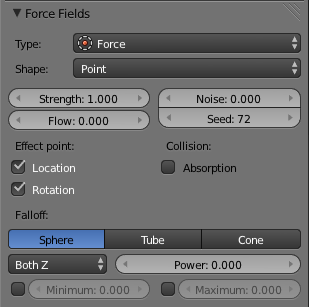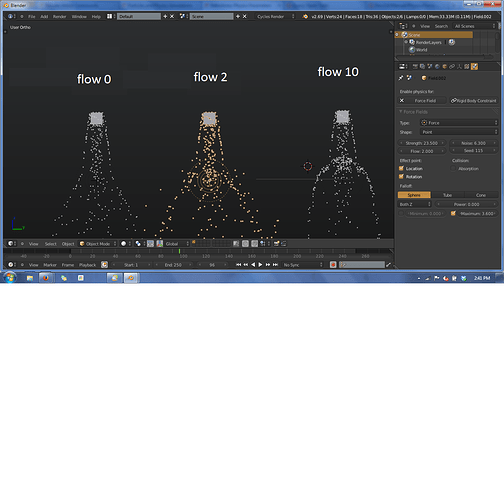Hi all,
I’m a technical writer for an IT networking company looking to get involved with Blender’s documentation, particularly its definitions. Definitions affect the manual and Blender’s tooltips. I’d like to start with the Physics section.
Just a heads-up: a tech. writer is not ‘a coder who documents the feature set’. A tech. writer is a translator, of sorts, translating complex instructions into unambiguous, user-friendly instruction. We might be engineers, or we might be completely unfamiliar with code or UI practices. Ultimately, we’re teachers, and yes, I’m trying to talk to coders on this. I’d just like a user perspective on these things as well 
Take a look at the Physics panel:

…Er, yes. Wasted opportunity, I believe. I’d like to know why the range is -10000 to 10000, and how Strength is measured (the metric unit is Newtons, but changing to metric measurements in the Scene sub-section doesn’t result in a metric measurement within the parameter values, like most distance measurements). Anyone offer any clarity here?
If this parameter is in Newtons, the tooltip becomes “In Newtons (N), positive values attract. Range: -10000 — 10000.”
If not, “Arbitrary value of attraction. Positive values attract. Range: -10000 — 10000.”
Flow
Tooltip: Convert effector force into air flow velocity.
I have no idea what this means. Ranges from 0-10. Is this a percentage? Is 10 a complete conversion?
Noise
Tooltip: Amount of noise for the force strength.
…Er, yes. Tautological definition is tautological. HOW does noise affect the Strength parameter? The range is 0 to 10. If this number is a value from 0 to 10 added to the Strength value, its effect won’t be noticeable when the Strength value is 300+. Is the Noise value a percentage of the Strength value? Is it added to the Strength value, or is it weight-centered on the Strength value (eg. if Strength is 5 and Noise is 1, the resulting Strength ranges from 4 to 6)?
Seed
Tootlip: Seed of the noise.
No kidding  Another example of tautological definition that offers no real explanation. A standard definition for Seed is “Current pseudo-random index number”. I tend to say “Change this value to use different random noise values.”
Another example of tautological definition that offers no real explanation. A standard definition for Seed is “Current pseudo-random index number”. I tend to say “Change this value to use different random noise values.”
That’s all I’d like to cover for now. Any help will be appreciated 
-Oro


